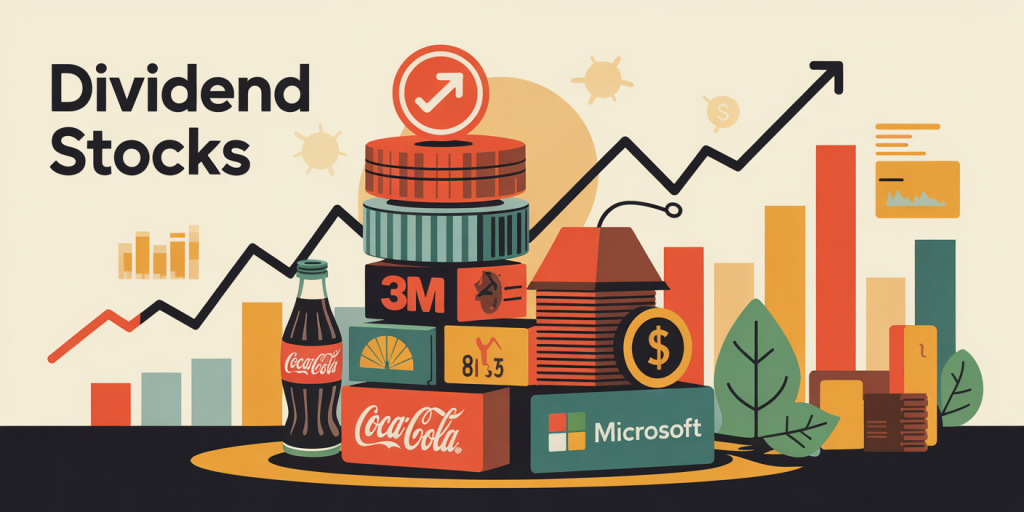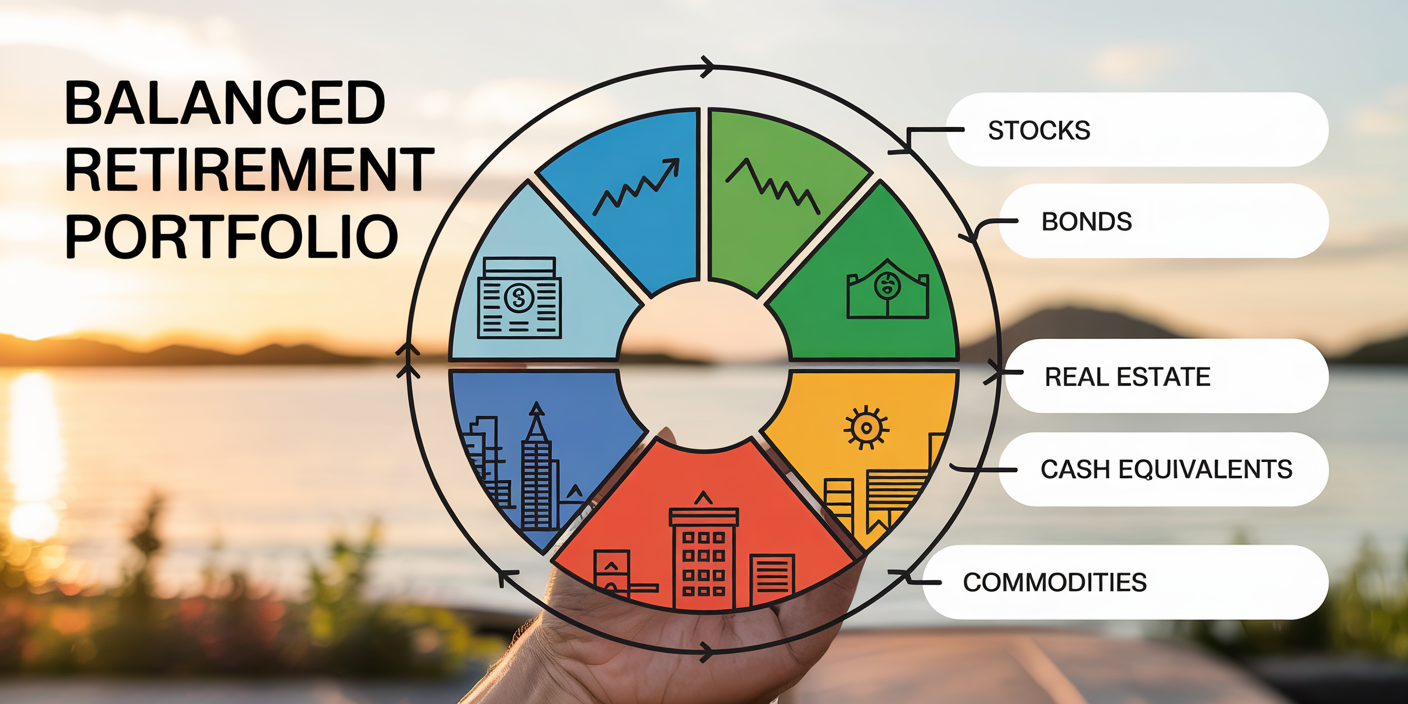Dividend Investing: Building a Passive Income Stream
Anúncios
In an increasingly volatile financial environment, many investors seek reliable methods to generate steady income without constant buying and selling of assets. Dividend investing has emerged as a popular strategy for building passive income streams by owning shares in companies that consistently distribute portions of their profits to shareholders. By carefully selecting stocks that pay dividends, investors can create a portfolio designed for long-term income generation, wealth preservation, and potential growth.


Dividend investing is particularly attractive for retirees or those planning for retirement, as it can offer regular cash flow beyond traditional interest-bearing instruments such as bonds or savings accounts. Many blue-chip companies, such as Johnson & Johnson and Procter & Gamble, have track records of paying dividends for decades, even during economic downturns. This reliability inspires confidence in investors seeking stability amid market uncertainties. To understand the mechanics and benefits of dividend investing more deeply, it is essential to explore its foundations, strategies, risks, and future outlook.
Anúncios
The Role of Dividends in Wealth Creation
Dividends represent a portion of a company’s earnings distributed to shareholders, usually on a quarterly basis. Unlike price appreciation, which depends on market conditions, dividends provide a more predictable income source as long as the company maintains its payout. The power of dividends lies in their ability to compound over time; reinvesting dividends can significantly boost an investor’s total return.
Anúncios
For example, consider two investors: one who invests $10,000 in a dividend-paying stock yielding 4% annually and reinvests all dividends, and another who invests the same amount in a stock with no dividend but an equivalent annual price appreciation of 4%. Over a 20-year horizon, the dividend reinvestor’s portfolio will typically outperform, primarily because of the compound interest effect. Data from historical market performance, such as the S&P 500 index, reveals that dividends have contributed nearly 40% of total market returns since 1930.
Dividend payments also have practical advantages. They can provide a tangible sense of ownership and income during market downturns when stock prices are declining. For instance, during the 2008 financial crisis, many dividend-paying companies continued their payouts, creating a cushion for investors.
Types of Dividend Stocks and Their Characteristics
Dividend stocks come in various forms, each with unique risk profiles, yields, and growth potentials. The primary categories include blue-chip dividend stocks, Dividend Aristocrats, high-yield stocks, and dividend growth stocks.
Blue-chip dividend stocks belong to large, stable companies with a history of reliable earnings and dividends. Companies like Coca-Cola, IBM, and McDonald’s fall into this category. These stocks typically have moderate dividend yields (around 2-4%) and lower volatility, making them suited for conservative investors looking for steady income and low risk.
Dividend Aristocrats are companies listed on the S&P 500 that have increased their dividend payouts annually for at least 25 consecutive years. This elite group includes firms like 3M, PepsiCo, and Colgate-Palmolive. Because of their commitment to consistent dividend growth, Aristocrats tend to attract income-focused investors seeking both income stability and capital appreciation.
In contrast, high-yield stocks offer above-average dividend yields, often 5% or higher, but they may come with elevated risk. Examples include Real Estate Investment Trusts (REITs) like Annaly Capital Management or energy firms like Enterprise Products Partners. These companies might have less stable earnings, and their high yields could reflect underlying business challenges.
Dividend growth stocks emphasize increasing dividends over time rather than high initial yields. Technology stocks such as Microsoft and Apple have become prominent dividend growers in recent years. While their yields may be modest initially, their capacity for consistent dividend raises can lead to substantial income escalation over the long term.
| Type of Dividend Stock | Yield Range | Risk Level | Examples | Typical Investor Profile |
|---|---|---|---|---|
| Blue-Chip Stocks | 2%-4% | Low | Coca-Cola, Johnson & Johnson | Conservative, income-focused |
| Dividend Aristocrats | 2.5%-3.5% | Low-Medium | 3M, PepsiCo | Long-term, reliable income seekers |
| High-Yield Stocks | 5%+ | Medium-High | REITs, MLPs in energy sector | Income seekers willing to accept risk |
| Dividend Growth Stocks | 1.5%-2.5% | Medium | Microsoft, Apple | Growth-oriented income investors |
Key Metrics for Evaluating Dividend Stocks
Successful dividend investing requires detailed analysis beyond just the dividend yield. Several quantitative and qualitative metrics help investors assess dividend sustainability and growth potential.
The most critical metric is the payout ratio, which indicates the percentage of earnings paid out as dividends. A payout ratio below 60% is generally considered sustainable for most sectors, as companies can retain enough profit to reinvest and cover future dividends. For example, a company earning $5 per share paying a $2 dividend has a payout ratio of 40%, suggesting a comfortable dividend cushion.
Dividend yield expresses annual dividend payments relative to stock price and provides a snapshot of income potential. However, a very high yield may signal company distress; thus, investors should beware of dividend traps where unsustainable dividends eventually face cuts.
Another important factor is dividend growth rate—the annual percentage increase in dividends. Long-term dividend growth can offset inflation and increase total returns significantly. Warren Buffett famously prefers companies with consistent dividend growth to preserve purchasing power.
Lastly, investors should assess free cash flow since dividends ultimately depend on company cash flow rather than accounting earnings. Firms with strong and stable cash flow streams tend to maintain or grow dividends more reliably.
Strategies for Building a Dividend Portfolio
Constructing a dividend-focused portfolio requires balancing yield, growth, risk, and diversification. Many investors follow a combination of strategies depending on their goals and time horizons.
One common approach is the Dividend Growth Investing Strategy, where investors focus on companies with a strong history of increasing dividends. This approach typically favors companies in sectors like consumer staples and industrials. For instance, Procter & Gamble has increased its dividend for over 60 consecutive years, offering low volatility and potential income growth.
Alternatively, High-Yield Dividend Investing focuses on maximizing current income by selecting stocks with elevated dividend yields. This approach suits investors approaching or in retirement who need immediate cash flow. However, it requires thorough due diligence to avoid high payout ratios and dividend cuts.
A Diversified Dividend Portfolio can blend various dividend stock types and sectors to spread risk and optimize income streams. For example, including utility stocks, healthcare, and REITs helps smooth income variability because these sectors respond differently to economic cycles.
Additionally, reinvesting dividends via a DRIP (Dividend Reinvestment Plan) allows investors to compound returns over time. According to a study by Hartford Funds, reinvested dividends boosted the average annual return of the S&P 500 by approximately 2% between 1926 and 2015.
| Strategy | Focus | Benefits | Risks |
|---|---|---|---|
| Dividend Growth Investing | Capital appreciation & growing income | Inflation protection & stability | Lower immediate income |
| High-Yield Investing | Maximum income | Higher current cash flow | Dividend cuts, higher risk |
| Diversified Dividend Portfolio | Balanced exposure | Risk mitigation & steady income | May dilute high yields |
| Dividend Reinvestment Plans | Compounding returns | Faster portfolio growth | Reduced immediate income |
Risks and Challenges in Dividend Investing
Despite its appeal, dividend investing is not without risks. One significant risk is dividend cuts or suspensions. Economic downturns, regulatory changes, or company-specific issues can force firms to reduce or halt dividends temporarily. For instance, during the COVID-19 pandemic in 2020, numerous companies like ExxonMobil and Disney cut or suspended dividends amid collapsed earnings.
Another risk involves sector concentration. Many high-dividend sectors such as utilities or energy can be sensitive to interest rate changes or commodity cycles, respectively. For example, rising interest rates may increase borrowing costs for these companies, pressuring profits and dividends.
Investors should also be wary of tax implications. Dividend income is often taxed as ordinary income unless qualified dividends apply. Tax regulations differ by country and investor profile and can influence net returns significantly.
Lastly, reliance solely on dividend stocks may cause lackluster capital appreciation in bull markets. Some fast-growing companies do not pay dividends but offer higher total return through stock price growth, which income-focused investors might miss.
The Future of Dividend Investing
Looking ahead, dividend investing is poised to remain a cornerstone of passive income strategies but will evolve with market dynamics and global economic shifts. With historically low interest rates persisting in many regions, dividend yields continue to attract investors searching for alternatives to fixed-income assets.
Technological disruption and changing business models might influence dividend policies. More companies, including in tech sectors, are initiating dividends or growing them steadily. For instance, the rise of digital economy leaders such as Microsoft and Apple as dividend growers challenges the traditional perception that dividend investing is limited to mature, slow-growth firms.
Globalization also expands dividend opportunities beyond domestic markets. According to the International Monetary Fund, emerging markets offer competitive dividend yields compared to developed markets, albeit with higher risk.
Sustainable investing trends introduce another dimension. Many investors now prefer companies with strong Environmental, Social, and Governance (ESG) profiles. Dividend-paying companies that excel in ESG criteria may become favored choices, promoting long-term dividend sustainability alongside positive societal impact.

Overall, dividend investing will continue to serve investors’ needs for passive income, wealth preservation, and portfolio diversification, adapting to changing financial landscapes and investor preferences.



Post Comment